Review Shortcuts
- Preparing Files
- Using Rekordbox, Serato and Traktor on the Prime 4
- Managing files on the Prime 4
- The Decks
- The Layout and Screens
- The Jog Wheels
- Additional Features
- The Mixer
- Connectivity
- EQ and Sweep Effects
- Performance Features
- Effects on the Denon DJ Prime 4
- Zone Output
- The Screen
- In Conclusion
Preparing Files
In the introduction, I mentioned how the current generation of stand-alone units require media analysed by a computer, and you maybe confused to learn that Denon DJ has its own software that it recommends you use with your music before using the Prime 4. However, whereas the competition at the moment relies on you doing this before a vast majority of performance features are at all possible, the Prime 4 has it’s own built-in processor and can actually perform the analysis on the fly should you skip the computer part.
Using Rekordbox, Serato and Traktor on the Prime 4
Denon DJ is aware that many DJ’s are using media analysed by competitors software and as such the Prime 4 can read and play any media set up using Pioneer DJ Rekordbox, Serato Crates and Native Instruments Traktor Pro playlists with BPM, Hot Cues, Loops and all other performance feature intact. This is an essential step in making the Prime 4 a real one for all player, regardless of your current set up you can approach the player with no preparation and within a few seconds, the player will have converted your media and performance data into Engine Prime format ready to play! Don’t worry it leaves the original data in place too so you can go back to your usual players with no issue.
Managing files on the Prime 4
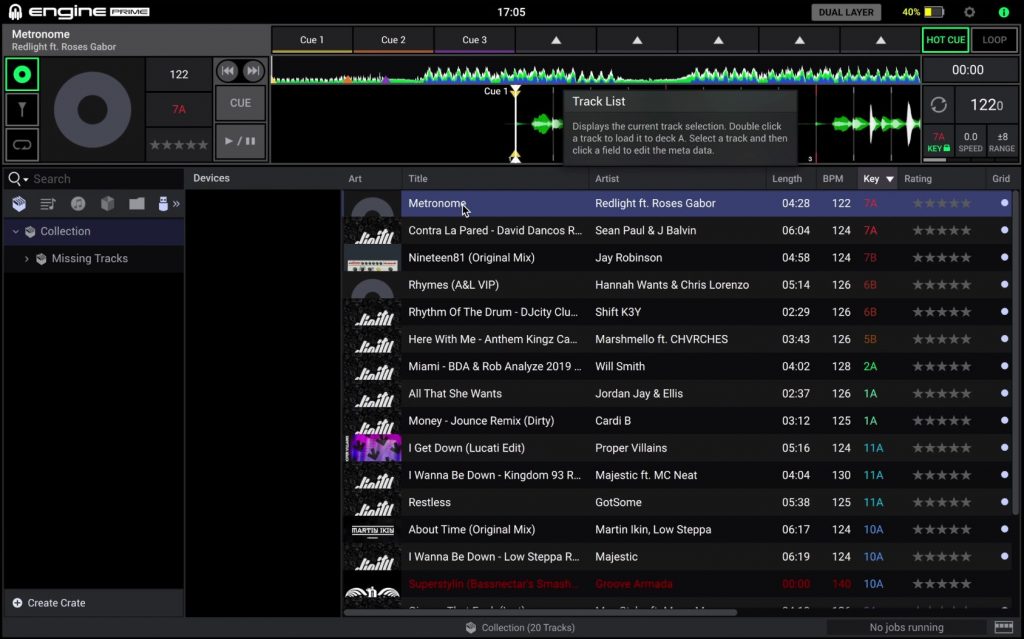
The Denon DJ Prime 4 also offers more ways than ever to play your media on the unit. Featuring a huge, 4 USB ports (one of the USB’s being especially to charge your phone/camera with a higher output voltage), 1 SD card reader and a 2.5″ SATA Hard drive bay you will never be short of ways to load music into the Prime 4.
The use of a hard drive on the unit is quite simply genius, wether your a mobile DJ wanting to load a vast collection of music onto the unit for any occasion. Or maybe you are buying one for your venue and you want a back up of music inside the unit at all times in case a DJ’s USB stick is broken.
The possibilities are endless and supporting 1TB officially and up to 4 TB unofficially, you can load more music onto the hard drive through the USB B port on the rear of the unit connected to a Laptop running Prime Engine software.
Organising a music library that could potentially be terabytes in size could seem like quite a challenge but the Prime 4’s inbuilt software and processor handle it with ease. You can create playlists and crates on the fly, drag and drop songs into them and even search through your media with the onscreen QWERTY keyboard. Advanced search filters including key, bpm, rating and much more can help you narrow down the track quicker and the addition of USB Keyboard support will cater to the needs of real power users! A small drawback is the inability to change the track’s metadata on the unit, so whilst you can organise your music like a pro. Actually editing ratings, names etc isn’t available at the moment.
The Decks
The Layout and Screens
If there was one issue we always had with older Denon DJ products, it had to be the mirrored layout. It’s not a huge deal and we are sure you would get used to it after a few hours but to attract users from other brands and more expensive independent setups, Denon had to make this unit have identical layouts on the deck sections. The decks feature 6” capacitive jog wheels with LED ring lighting and an HD display in the centre. The display can be used to display your own logo and performance information such as loop lengths. We would have liked to have seen the option to display more information in these screens, the BPM would have been great so we aren’t looking up to the screen as often.
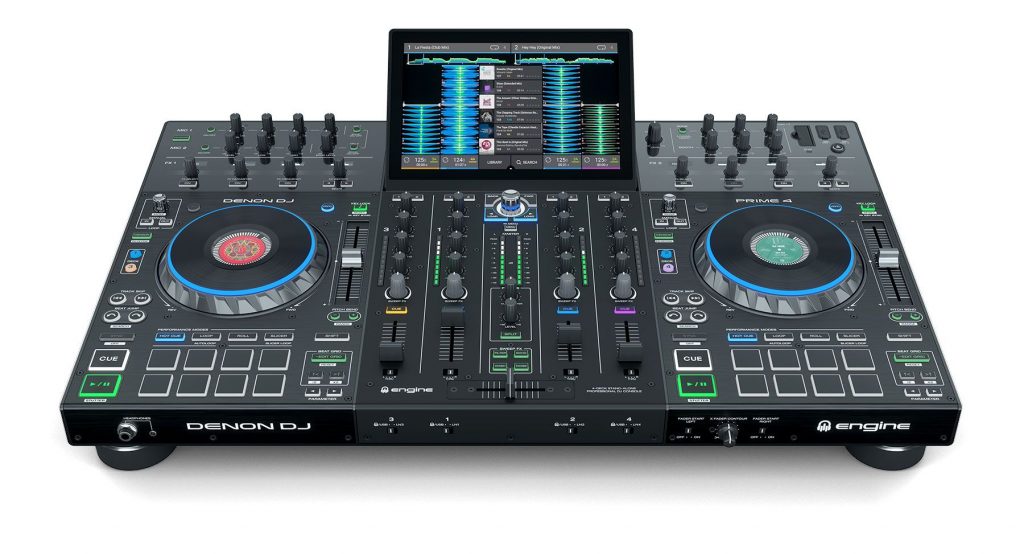
The Jog Wheels
The LED ring colour corresponds to the deck layer to which you are playing. It’s a great way of remembering if you are using the deck to control Deck 1 or 3, 2 or 4 and this colour choice is mirrored on the CUE buttons on the mixer and on-screen deck. The jog wheels are lighter than those found on the SC5000 units and this is a great thing. Sadly they don’t feature adjustable tension and they carry their weight a bit too well, which means a slight nudge can run away from you if you’re not careful.
Additional Features
The deck section feature beat jump buttons, auto loop knob with manual in/out buttons and the usual slip, vinyl, sync and large tactile play and cue buttons. The pitch faders are long-throw and feature nudge buttons to the bottom for the DJ’s who prefer not to use the jog wheels. These buttons also double as pitch range controls when shift is held. The unit has a safety feature that will not allow you to move to a range that’s outside of the currently playing tempo. It will, in fact, illuminate an arrow to the side of the pitch fader, to warn you to move the fader this direction before trying to change the range.
It’s a small detail but one that a lot of users will be thankful for, saving the embarrassing, odd sounding jump in tempo. We can key lock the pitch above the fader, long-pressing on this will sync the keys between tracks. You can change the key of any track on the screen, a first within any hardware. This feature has only been available to laptop users up until now!
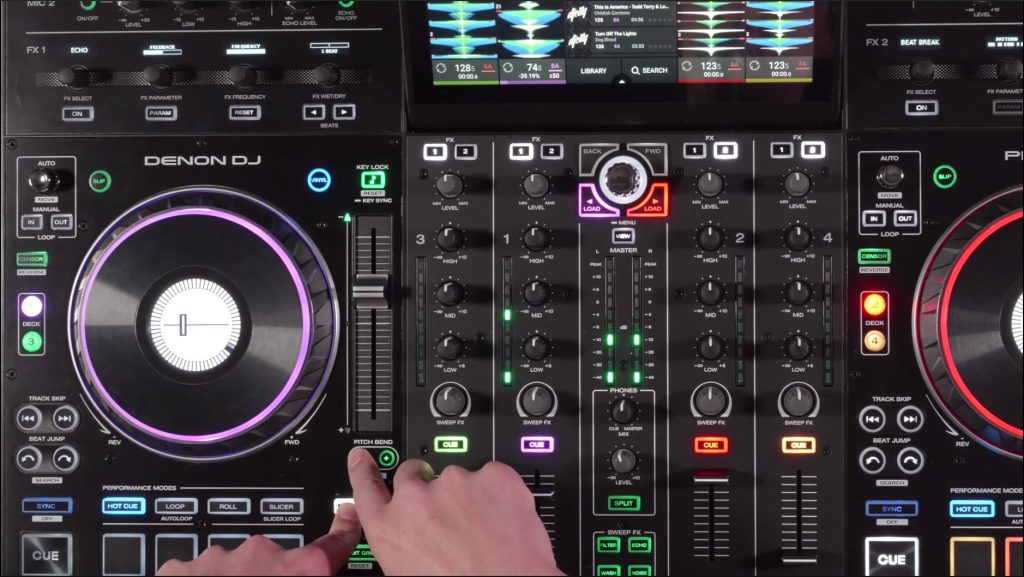
Below the pitch fader we find dedicated beat grid controls, these are a necessity for users who won’t be using a computer to prepare their tracks before coming to the player. The Prime 4 does a great job of analysing tracks on the fly but DJ’s playing music with a moving BPM will be glad to see they can still edit grids on the fly! Finally, we are met by 8 RGB soft-touch performance pads. With a variety of performance modes, these feel great and any DJ coming from a high-end controller will real right at home with them.
The Mixer
Connectivity
The Denon Prime 4 may be able to play from almost any digital source but what if you really want to play from external sources. Well Denon DJ hasn’t left any stone unturned with the Prime 4, with all four channels being able to be assigned to external devices. Add to that 2 switchable phono inputs on channels 3 and 4, with the upcoming DVS support for Serato already announced.
Outputs are handled by balanced XLR for the Booth Out and Zone Out (more on zone outputs later). We have an unbalanced RCA and Balanced XLR output for the master with a Mono/Stereo switch. Headphone ports of both sizes are found on the front of the unit and you can control the volume, mix and even enable split cue from the mixer.
There are two dedicated microphone combo XLR/Jack inputs with great-sounding preamps and full 3 band EQ and adjustable echo. The mobile DJ’s will love this feature and it’s a big step up over most of the competitions controllers that use and lose regular channels on the unit in order to control a mic.
We also find Link port on the rear of the unit, this can output time, BPM and other track data to compatible sources. This information is sent to lighting systems such as Resolume, Soundswitch, TimeCode and StageLinq. The fact that you only need a Prime 4 and compatible lighting controller to provide a fully automated and professional show is fantastic news for smaller venues and mobile DJ’s alike!
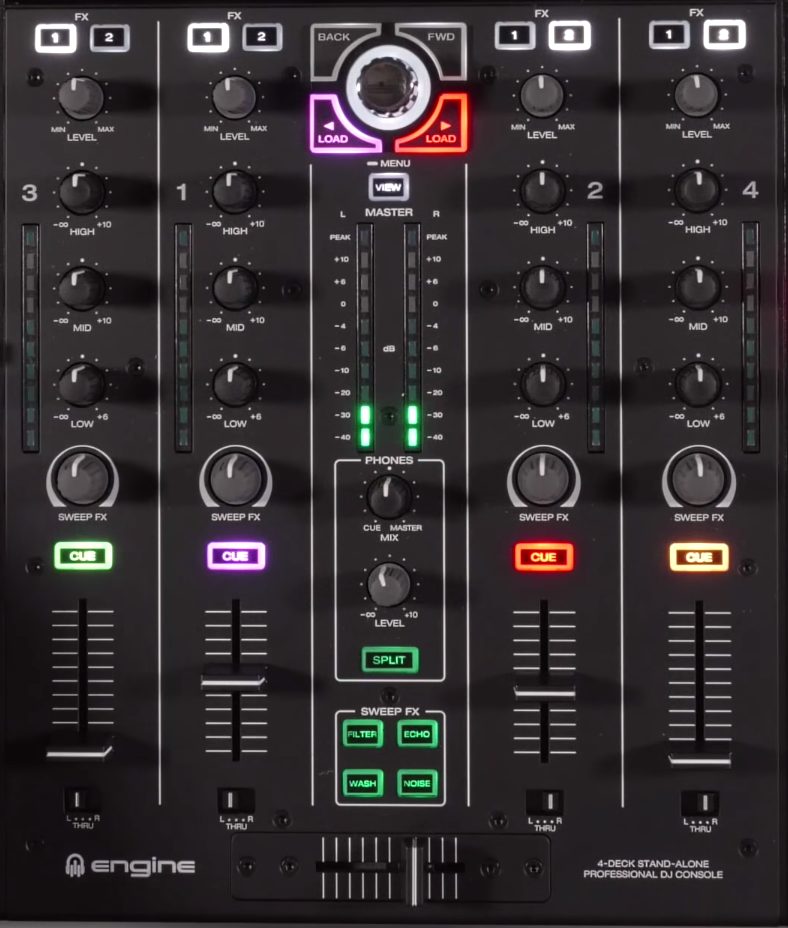
EQ and Sweep Effects
The mixers four channels all have a full three-band EQ that unlike competitors units can completely be customised on the screen. From the EQ/Isolation settings to the frequencies and even the shape of the filters. You can completely mould the Prime 4 to meet your exact sound needs should you wish! Within the settings, on the screen, you can also adjust the headphone mix and level settings.
The mixer features 4 sweep effects with HP/LP filter, echo, sweep and noise. These, however, all revert to HP/LP filter when you’re using an external device strangely, however, the two banks of dedicated effects work fine with external devices.
Performance Features
With 8 large RGB performance pads at the bottom of each deck, you’d be forgiven for thinking the unit was another controller at first glance. These pads can be used for Hot Cues, Saved Loops, Roll and Slicer. By double-tapping we can access additional auto loops and slicer loop modes. It’s a shame given the units ability to change the key that we don’t have a Keyboard/Pitch Play mode similar to that found on Serato and Pioneer controllers.
A more obvious omission is the lack of any sampler, urban DJ’s especially won’t be pleased to learn that there is no way to play one-shot samples at this moment in time. The unit does, however, feature a recording facility that can write and name the mix onto any media device, including the playing one!
Dedicated beat jump controls taken from the SC5000 range of players are a much-welcomed feature. The Auto Loop knob does it’s job fine but it’s a little small and we prefer the dedicated buttons found on the Pioneer range of players. It’s not a deal-breaker but the buttons run no risk of adjusting the loop length as you push them in to activate, unlike this knob.
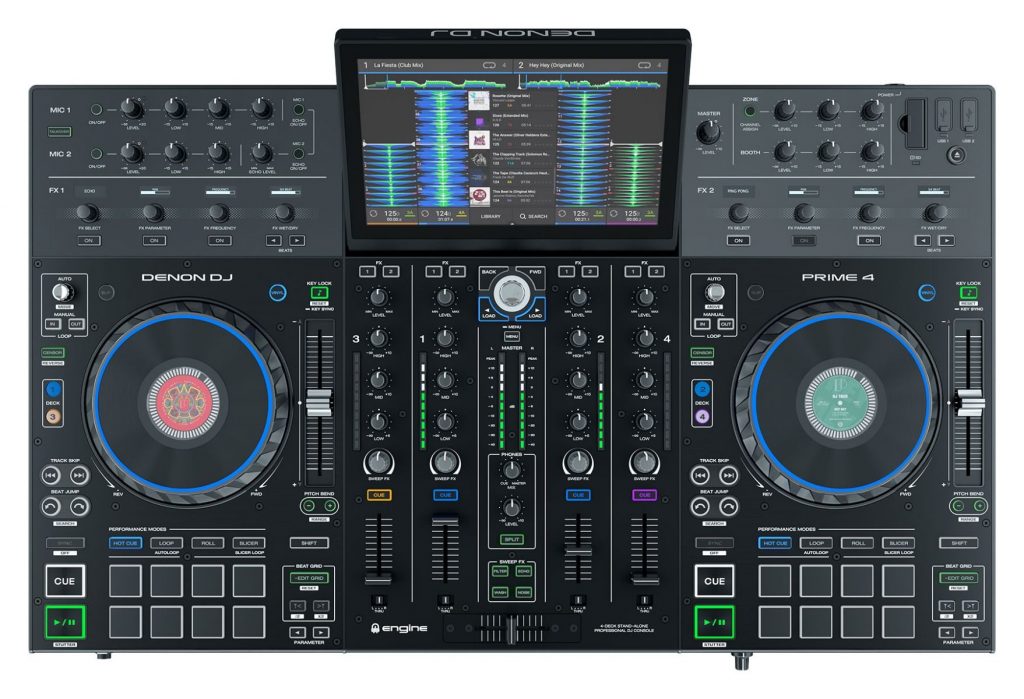
Effects on the Denon DJ Prime 4
The two banks of dedicated effects can be assigned to each channel one at a time, this does stop us layering effects from the two banks but you can use the sweep effects on the mixer to add some more flair if you wish. Each bank controls 14 individual effects, which have been lifted straight from the X18000 mixer.
The unit features 4 monochrome screens above 4 knobs, allowing the DJ to control parameters of the effect such as beat grid, frequency and beat length.

These controls are brilliant and really allow the DJ to dial in the sound they want, however the knob that controls which effect is selected could be better. There’s nothing wrong with the way it operates but we would have preferred a dial that clicks, such as the browse knob to allow better feedback when flicking between the effects. A point to note here is that given the lack of hardware limitations, there’s nothing to stop Denon DJ adding more effects in a future update!
Zone Output
One of the biggest talking points on the Prime 4 has been the Zone Output, the ability to play different music in a completely different area all from the same player. Ideal for mobile DJ’s needing to play a second feed to another room without having to leave an iPod around with no way to control it. The Zone outputs through a dedicated pair of XLR outputs on the unit and when activated takes over control of channel 4. Once you have a track loaded into deck 4, hit the zone button and that entire playlist will then auto play out to the second area.
You can control the level and 2 band EQ of the zone direct from the unit. If playing an internal playlist isn’t for you you can also send channel 4’s external source to the Zone. We can also see this feature being useful in smaller venues, the zone could output to the seating area, bar area or even the toilets and hallways. It’s a brand new concept and something we would love to see on more hardware in the future!
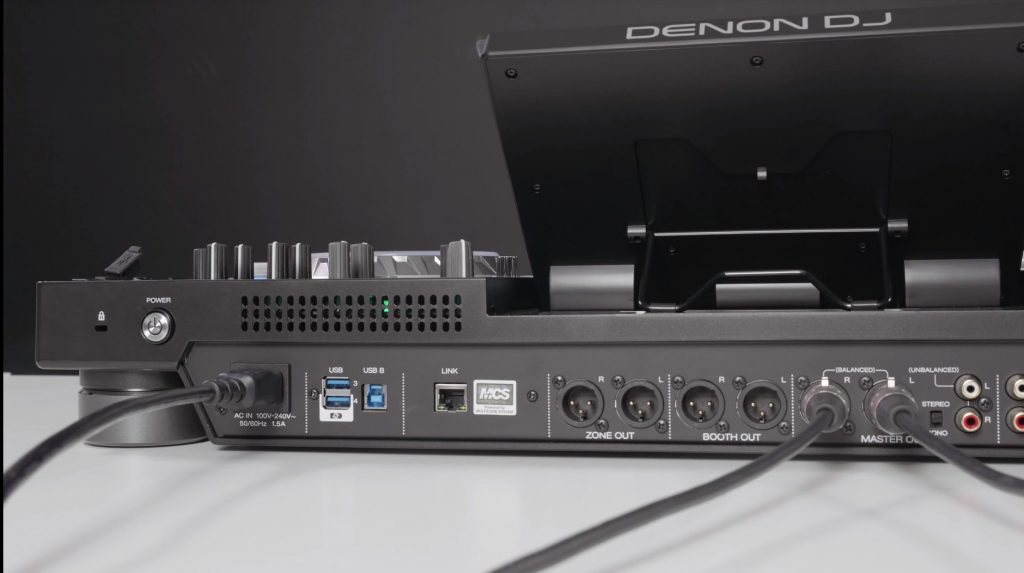
Note the white icon around the lowest USB port, this is the dedicated port for charging your phone!
The Screen
Literally the stand out feature of the Prime 4, the 10′ fully adjustable glorious high-resolution glass screen dominates the unit. Operating much like an iPad or smartphone, the multi-touch display allows you to swipe, pinch and drag your way around the Denon interface. It’s all very intuitive and doesn’t need a manual to use, if you want to move a song into a playlist just drag it. Want to load a song? Swipe it into the virtual deck! Using a high refresh rate, the waveforms scroll buttery smooth, even when you are pinching in or out to adjust their size. If you aren’t a fan of using the screen all tasks can be controlled via the transport controls found just below in the centre of the mixer.
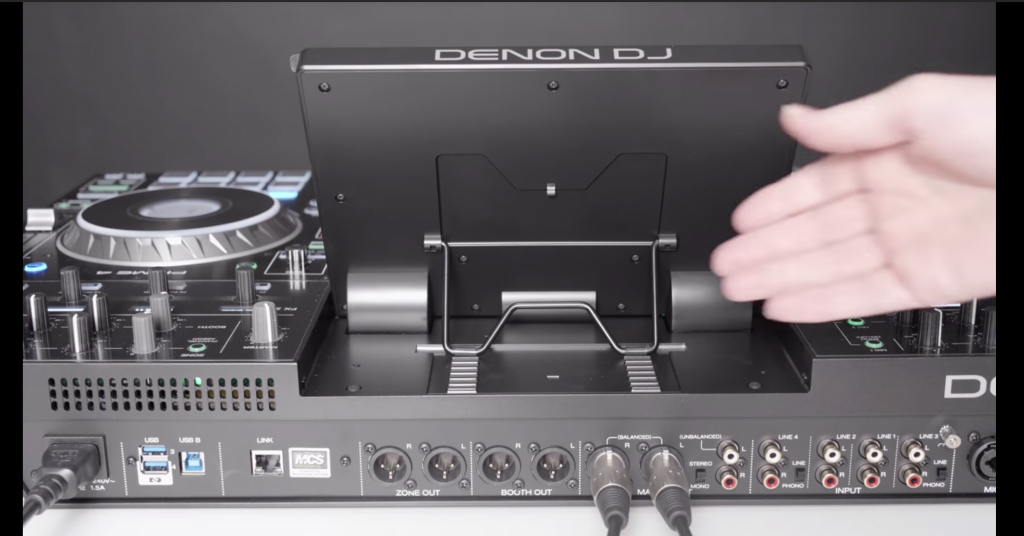
The angle of the screen is adjusted with the support found on the back, there are a variety of angles to chose from and when laid flat the screen returns into the unit with a reassuring click. The screen does stand out a bit from the unit, so included is a protector when you are transporting the unit, we would personally recommend the use of a dedicated flight case regardless! If you are worried about fingerprints muddying your lovely new unit’s screen, don’t worry Denon DJ have even included a microfibre cleaning cloth!
In Conclusion
Denon DJ, take a bow. However not perfect, this is the worlds first true standalone unit that really can take the fight to its competitors. The power of the multicore processor inside, the fantastic standalone 4 channel mixer with effects plus a glorious 10” multi-touchscreen all combine to make the superb player. It’s hard to imagine that this is a unit priced around the same as a high-end controller (that needs an equally expensive laptop to work) or a mid-range 4 channel mixer. It’s the exact same price as the Pioneer DJ XDJ-RX2 ($1699) and includes far more performance features. When you take that into consideration, it’s almost baffling how much you are getting for your money.
However that said, we would have liked to see a few changes. First of all, we aren’t a fan of the chrome browse knob, there is nothing wrong with its feel or action but it looks a little cheap. We would also have liked to seen a clicky style dial on the FX select knob as the smooth action of the current one gives the user no haptic feedback when you’ve changed effect.
The lack of sampler is a surprise given the power inside the unit as is the lack of a pitch play mode on the performance pads. The central HD displays in the screens could be utilised a little better too, think DDJ1000 for example. That said the unit is due to receive many firmware updates and Denon DJ do listen to the feedback given, as shown in the addition to horizontal waveforms that will be coming soon in a firmware update from feedback given at the initial launch!
The unit isn’t perfect, nor is the Engine Prime software that Denon would like you to use, but given its price point and lack of direct competition we can see customers lapping it up! It’s been reported that Denon DJ has just invested a large amount into a brand new software development team, so expect we can expect big things coming from the Engine Prime software soon!
Has Denon DJ done enough to take the momentum away from the other big brands in the market? Will you be investing in the Prime 4? Let us know in the comments below!
★★★★★
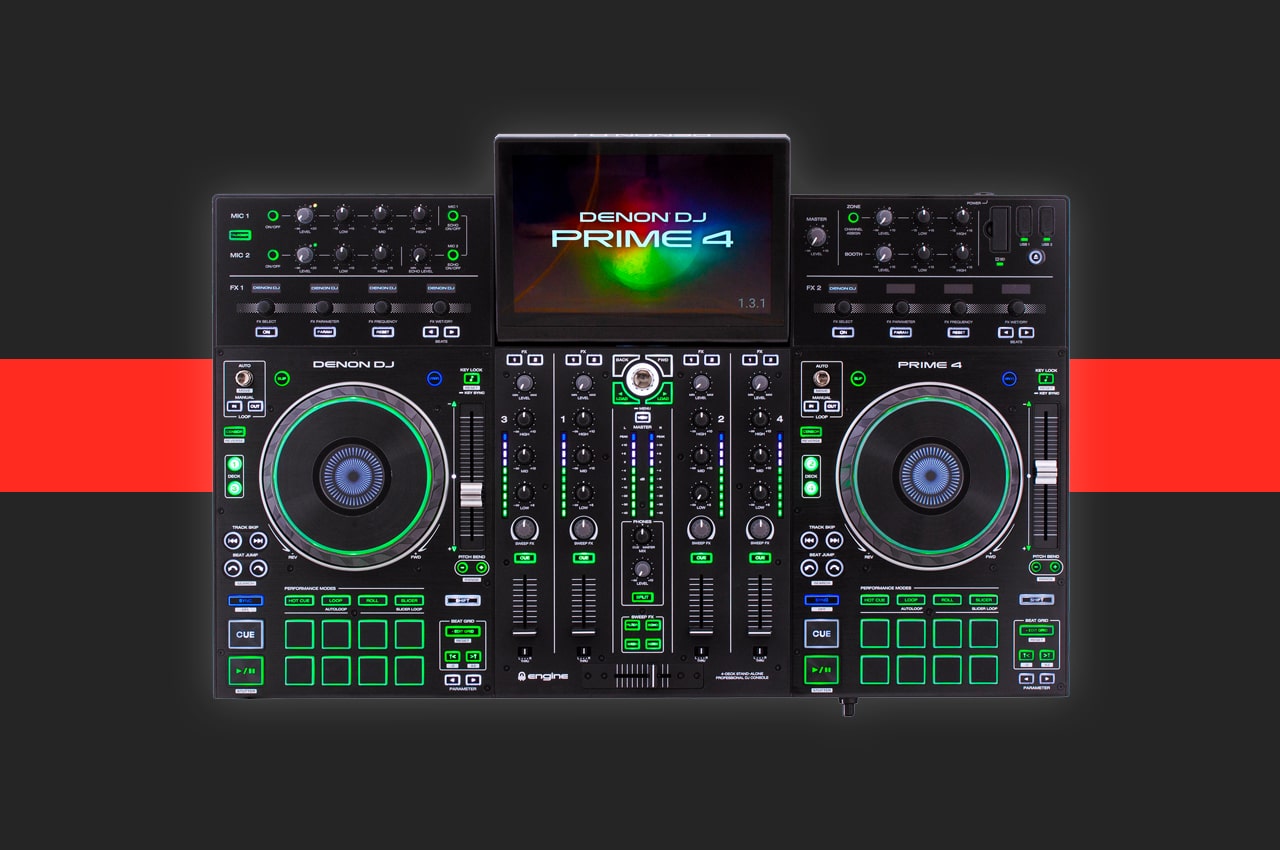

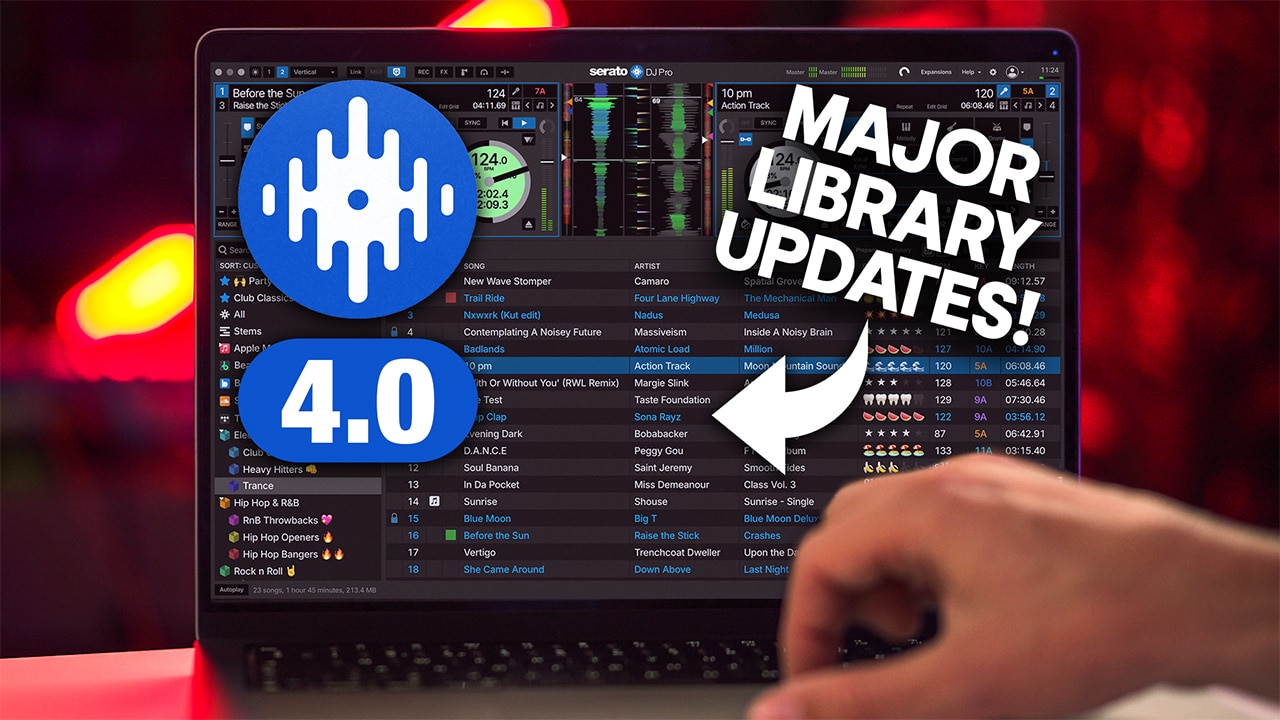
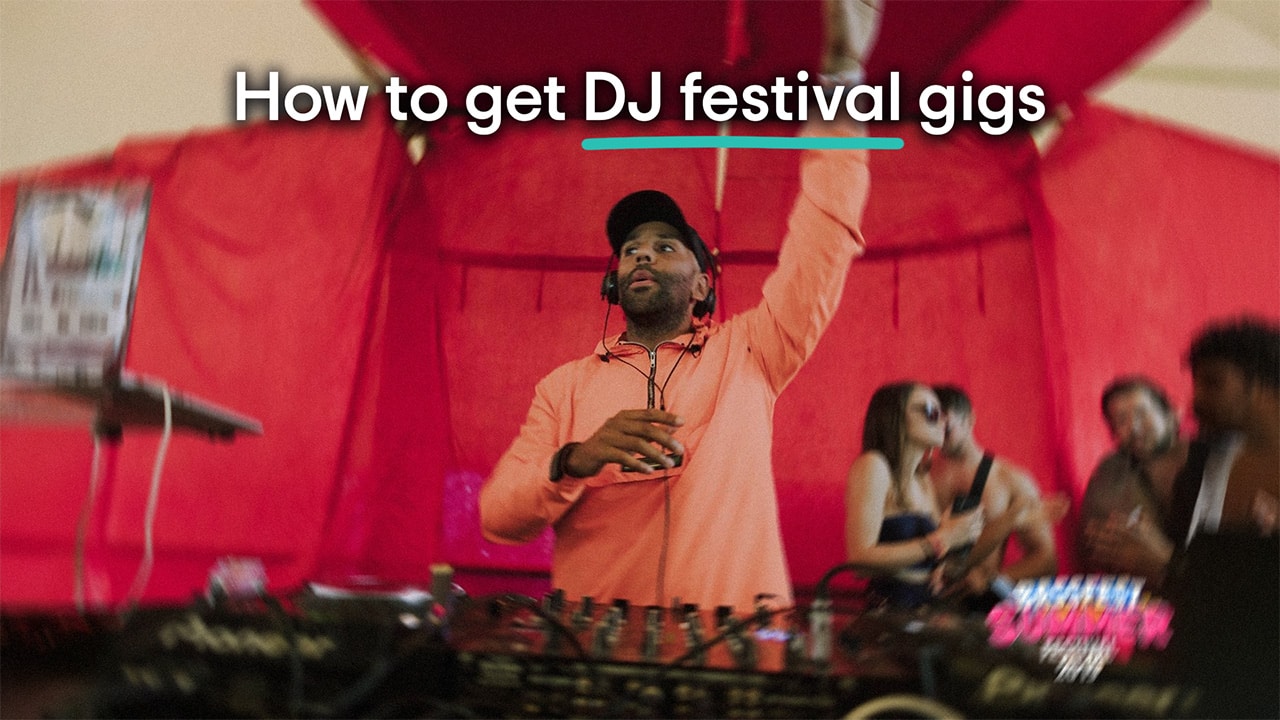
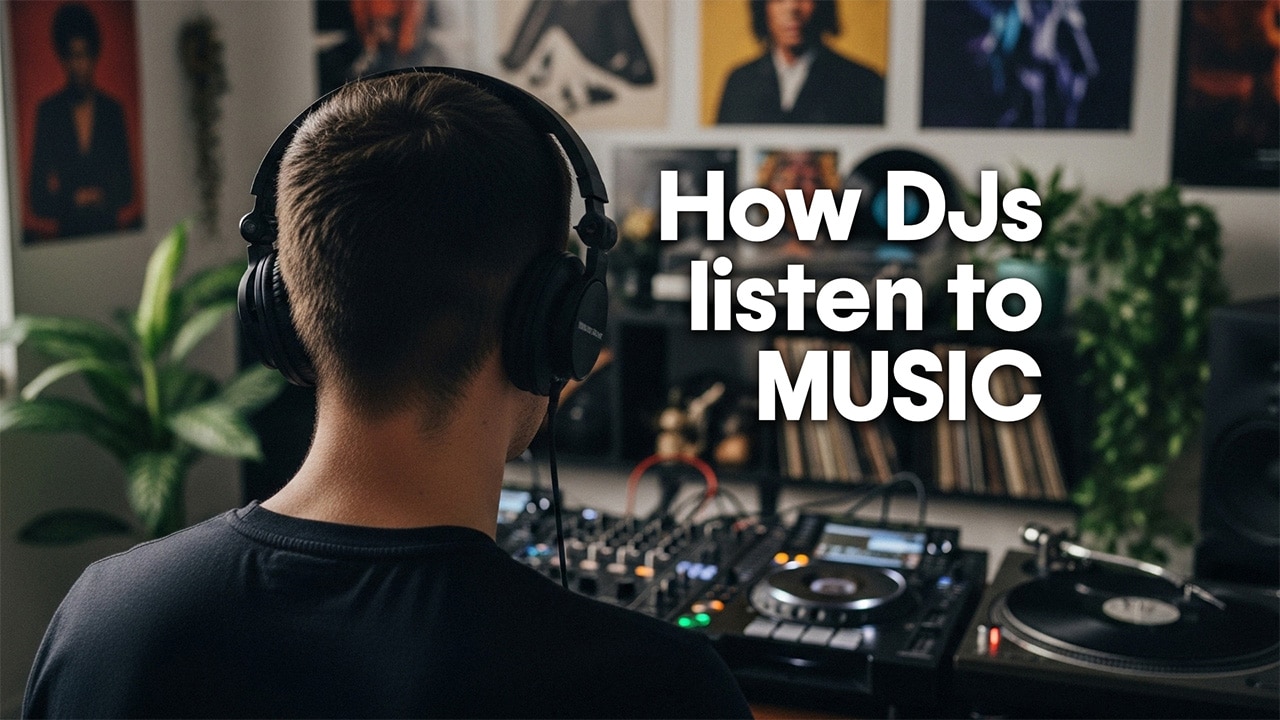
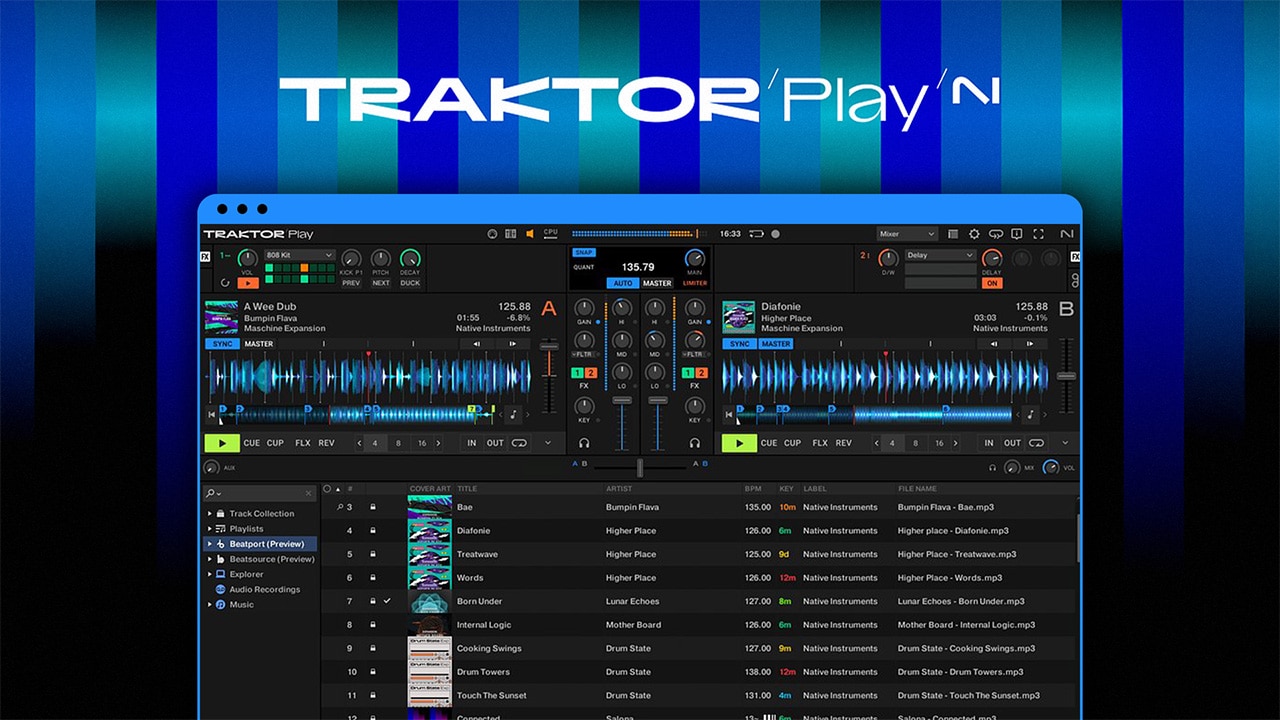
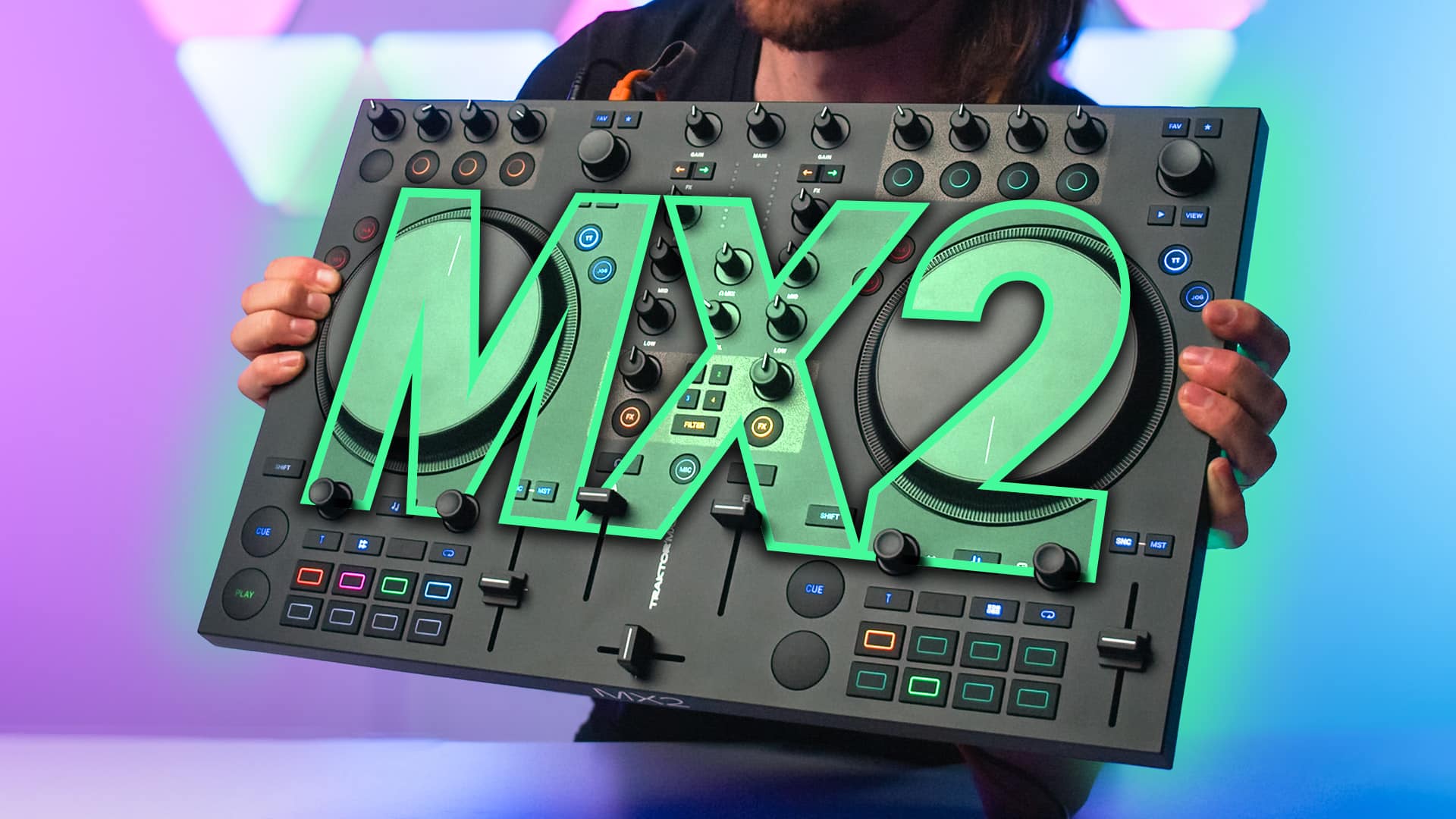
How can I buy them
You can buy them from most online DJ stores however they’re waiting on the second batch of shipments now. It’s worth checking out Denon DJ’s facebook/instagram pages for updates on this.